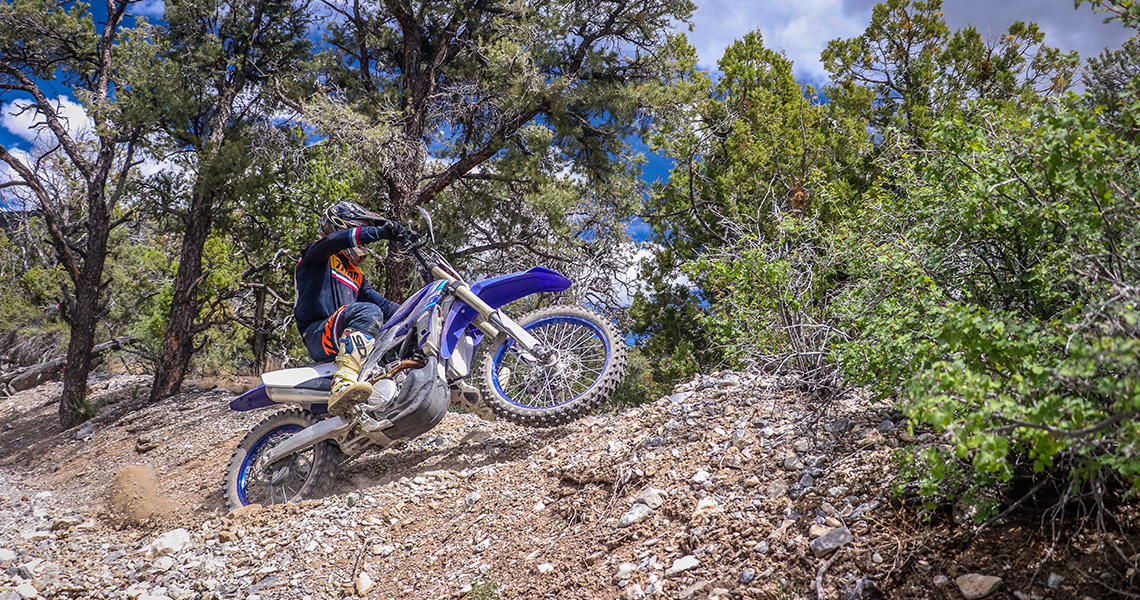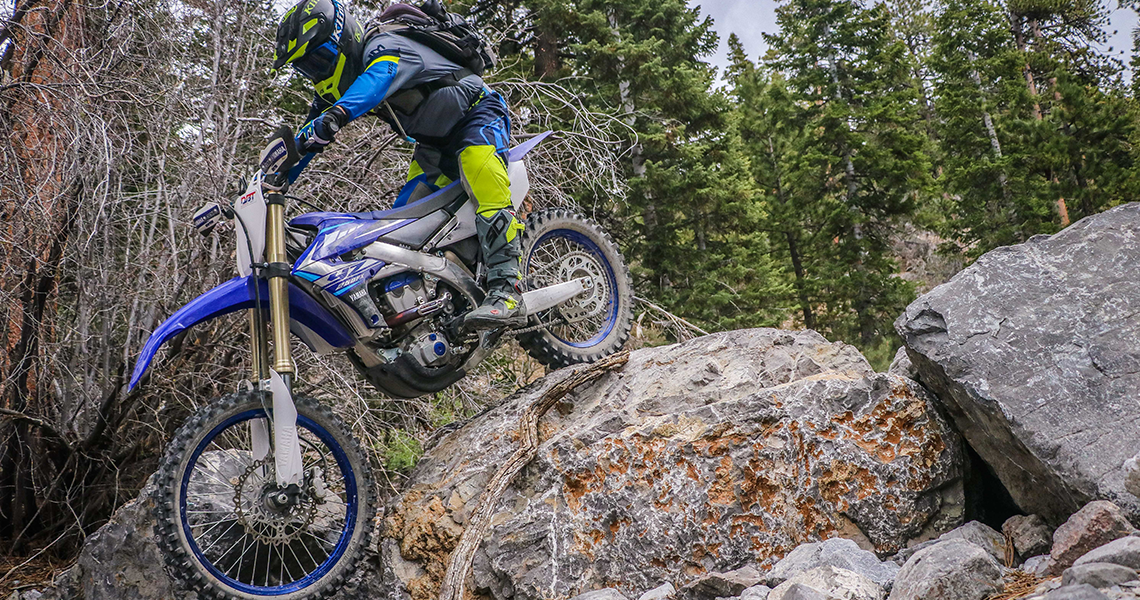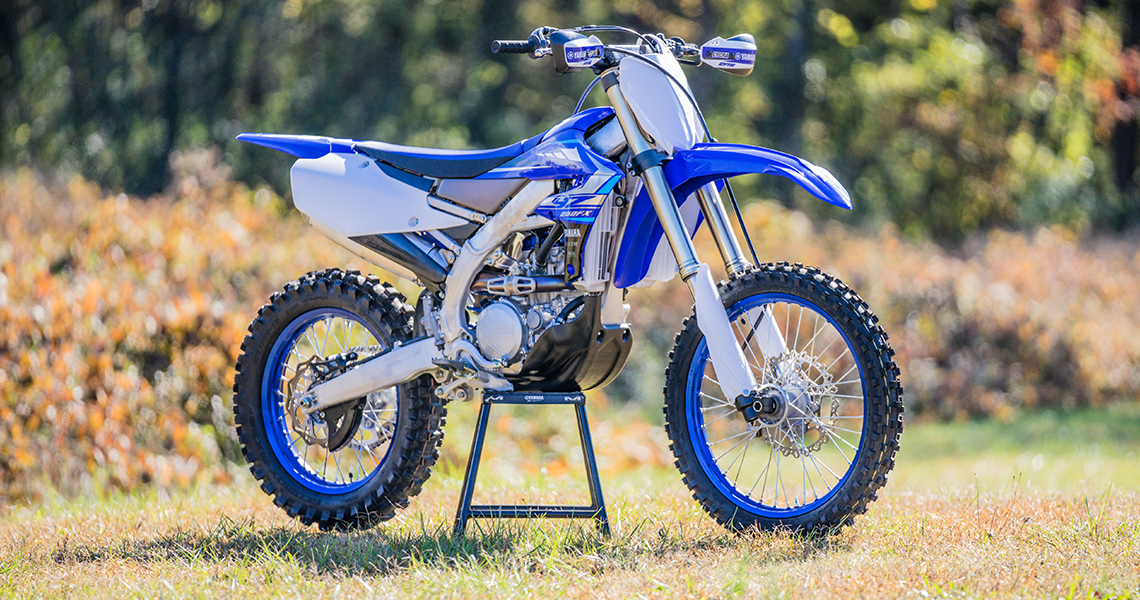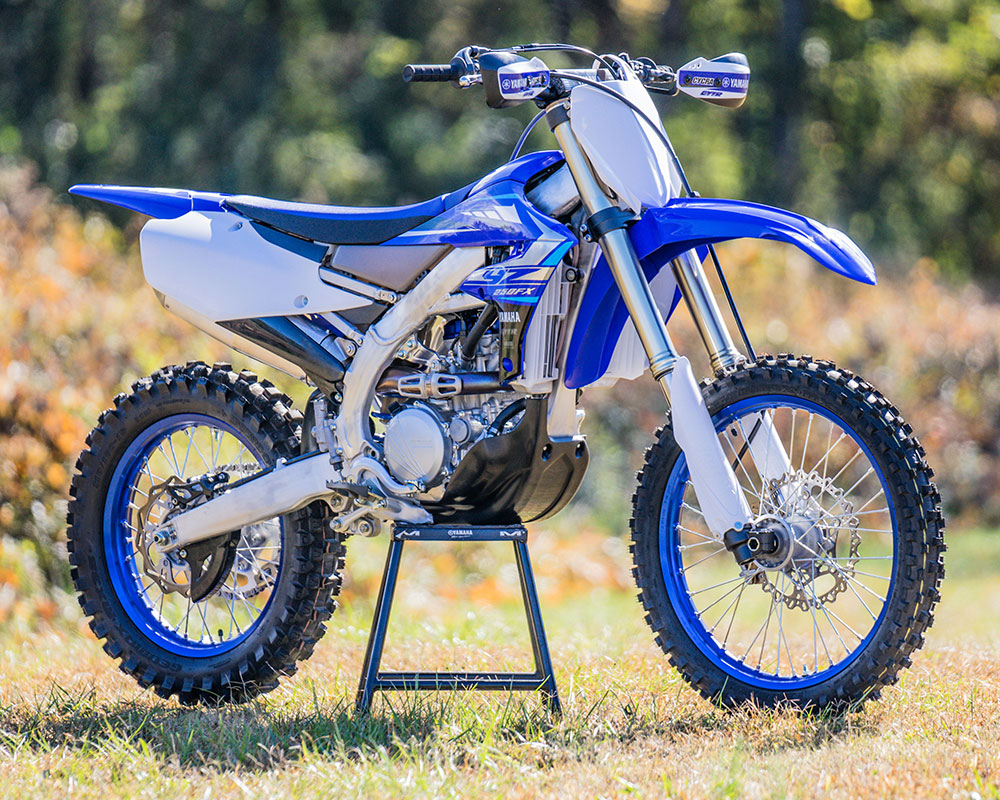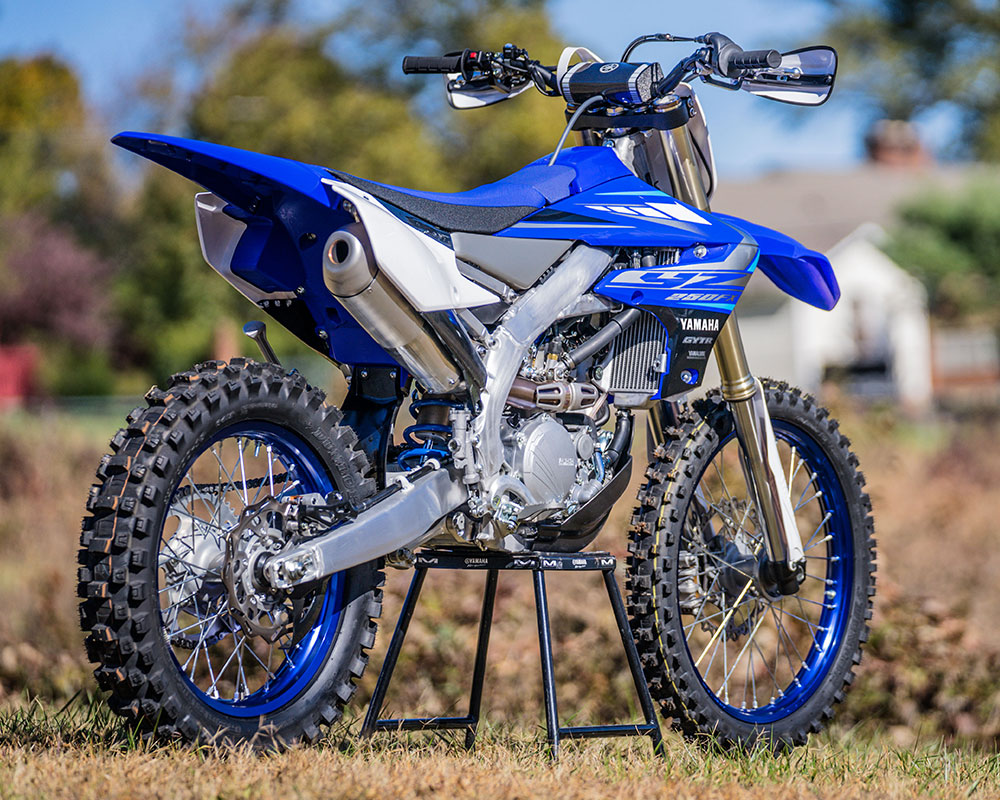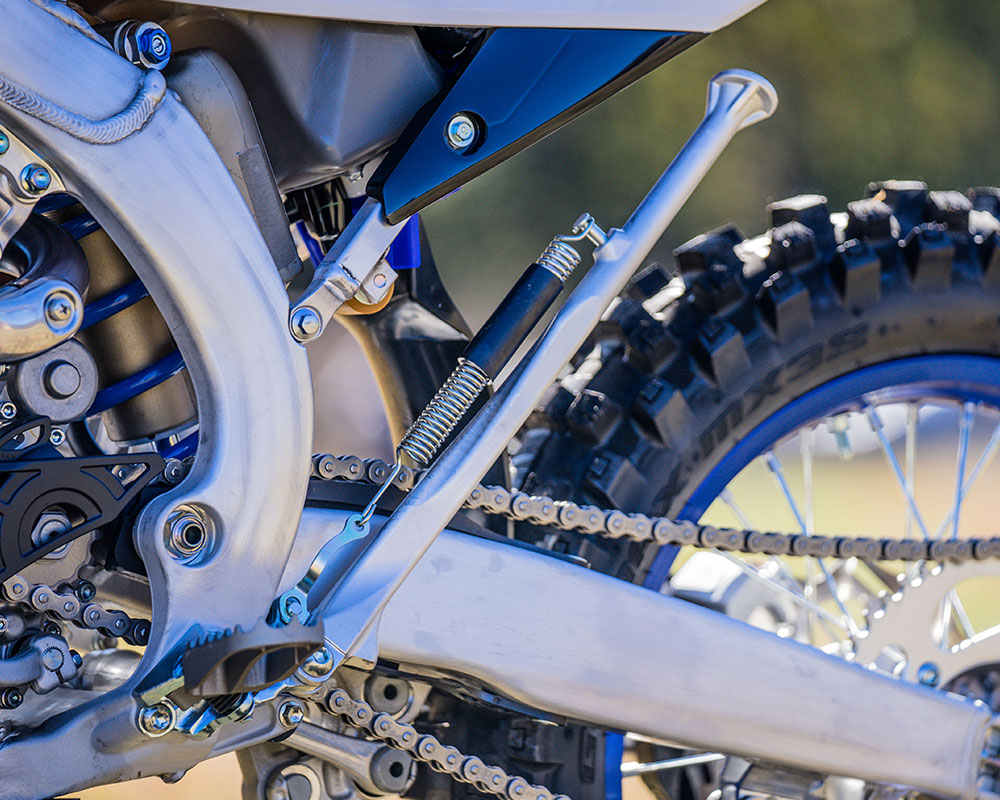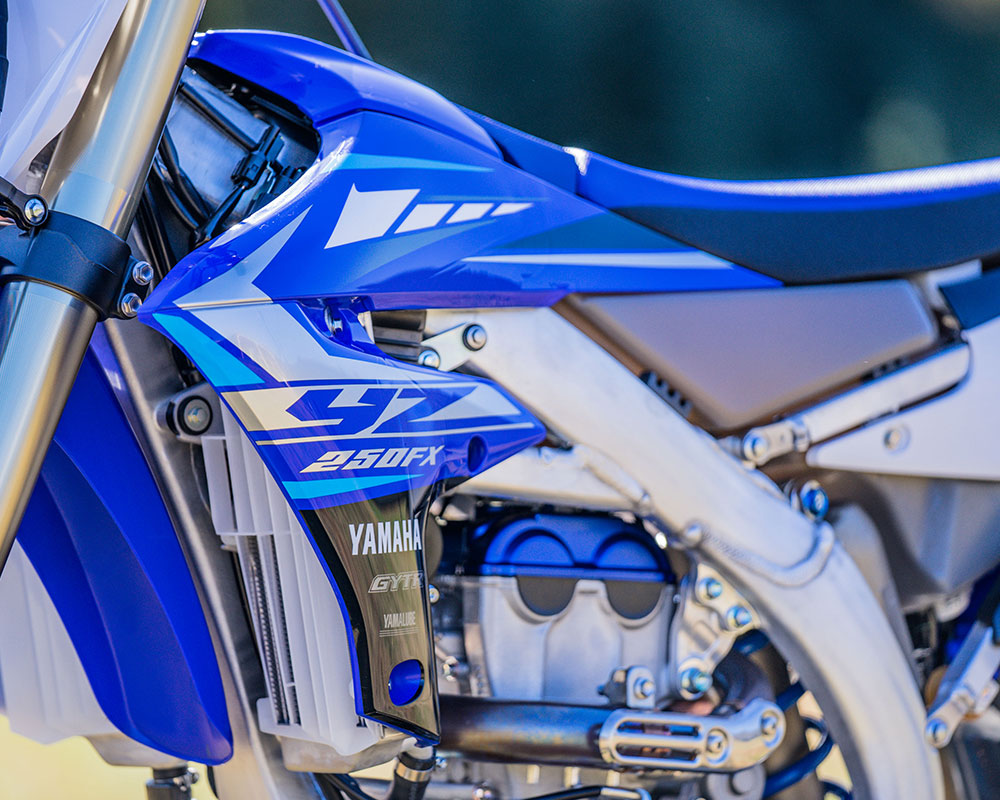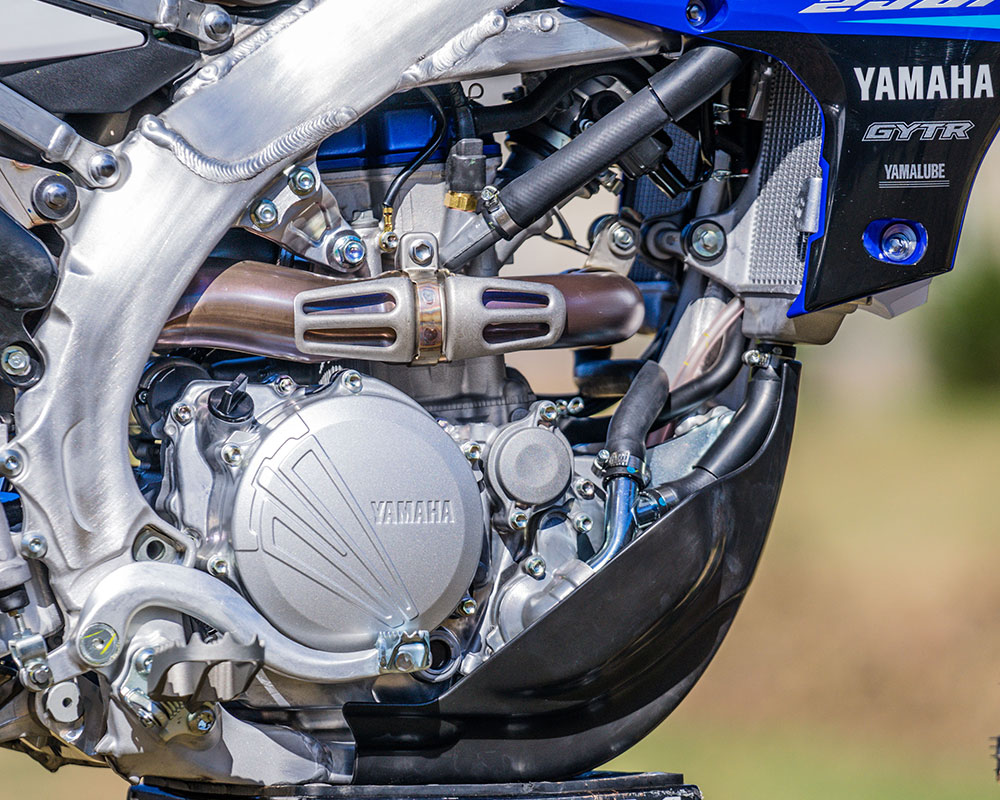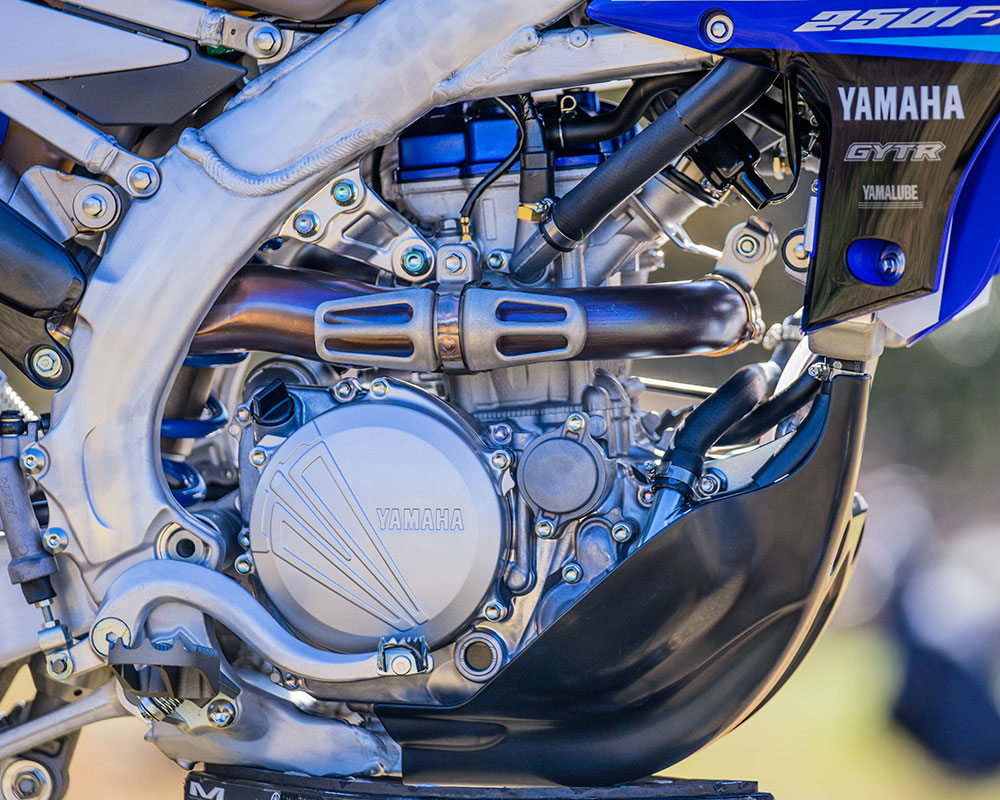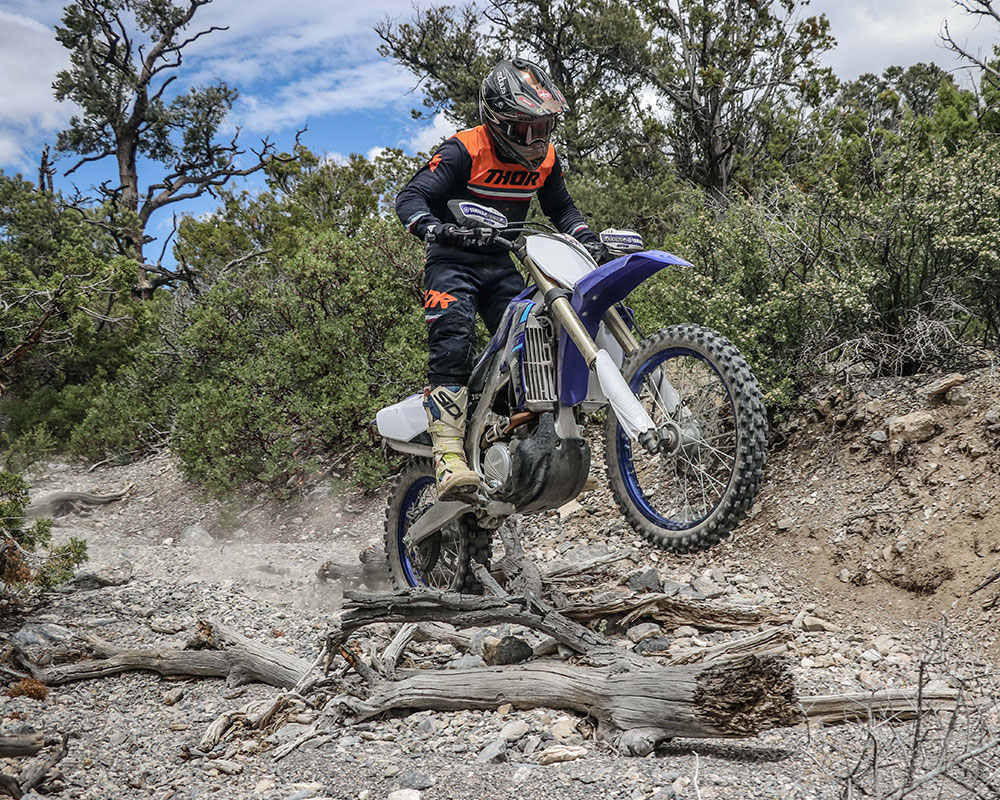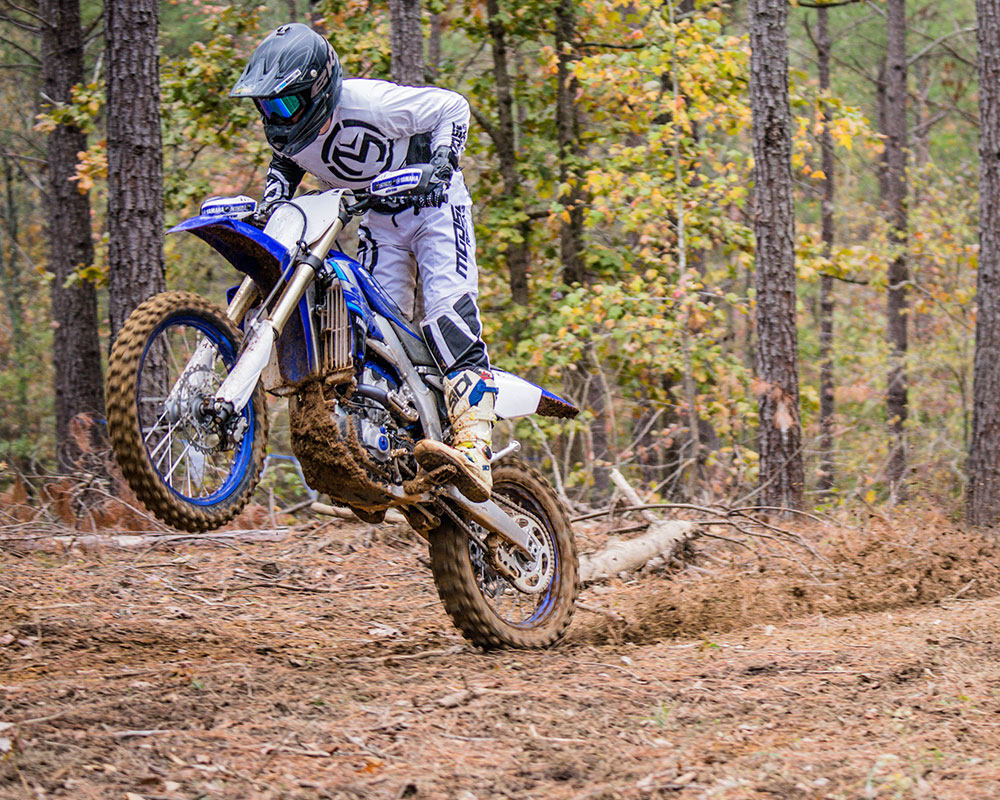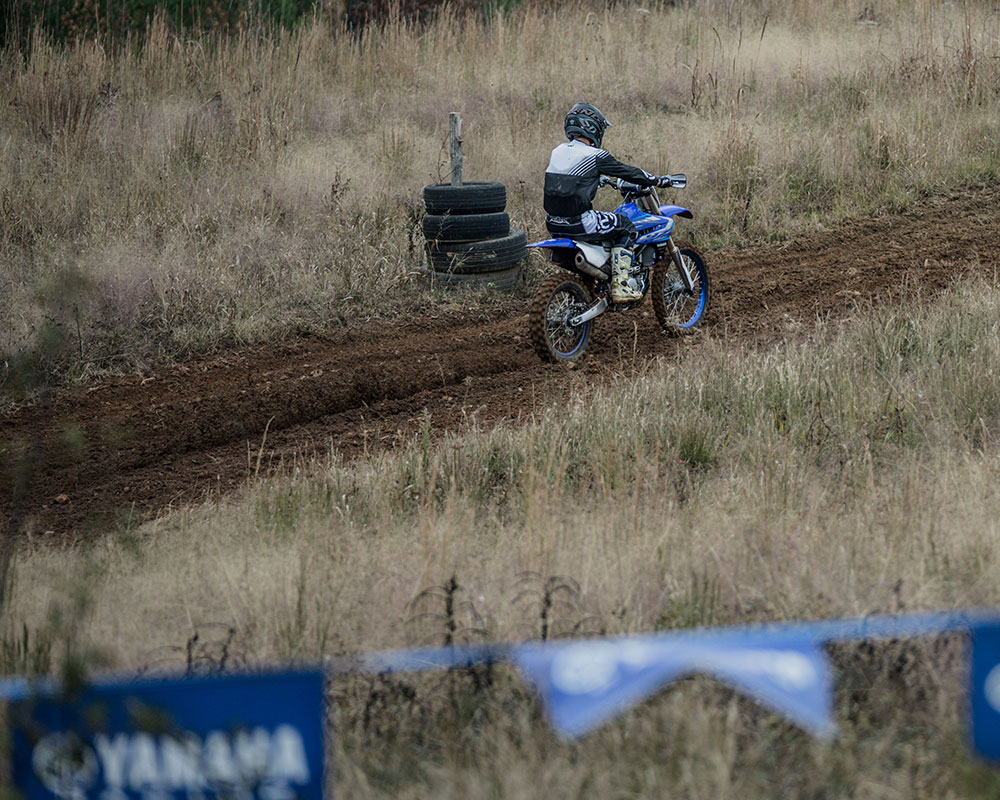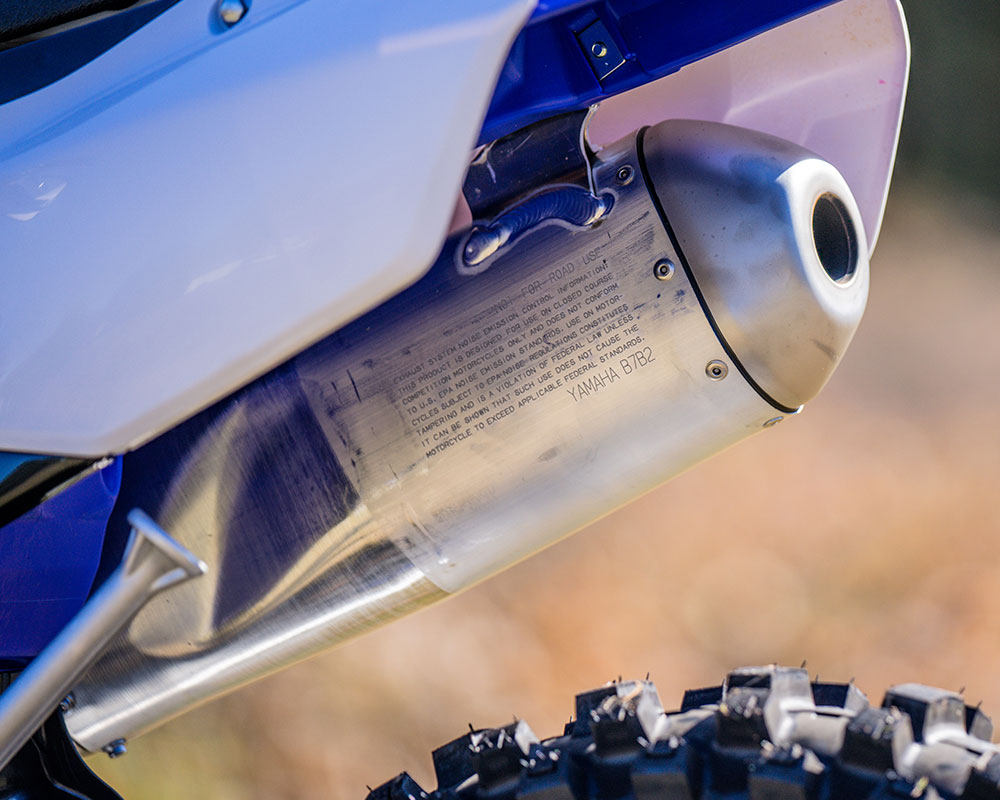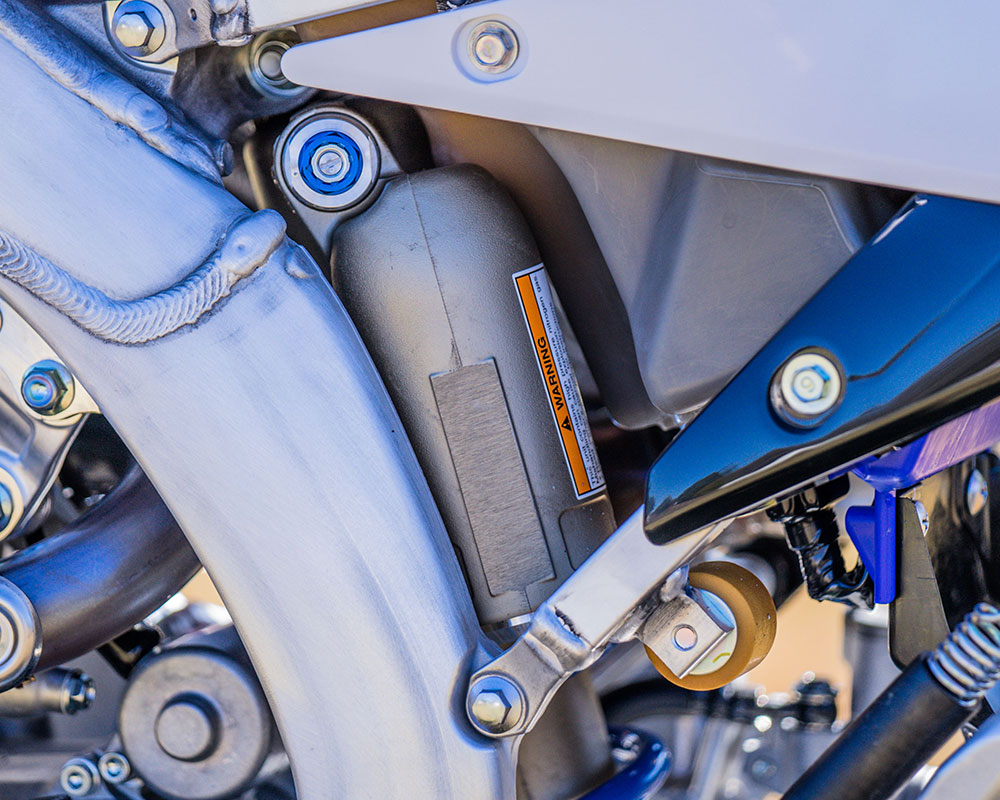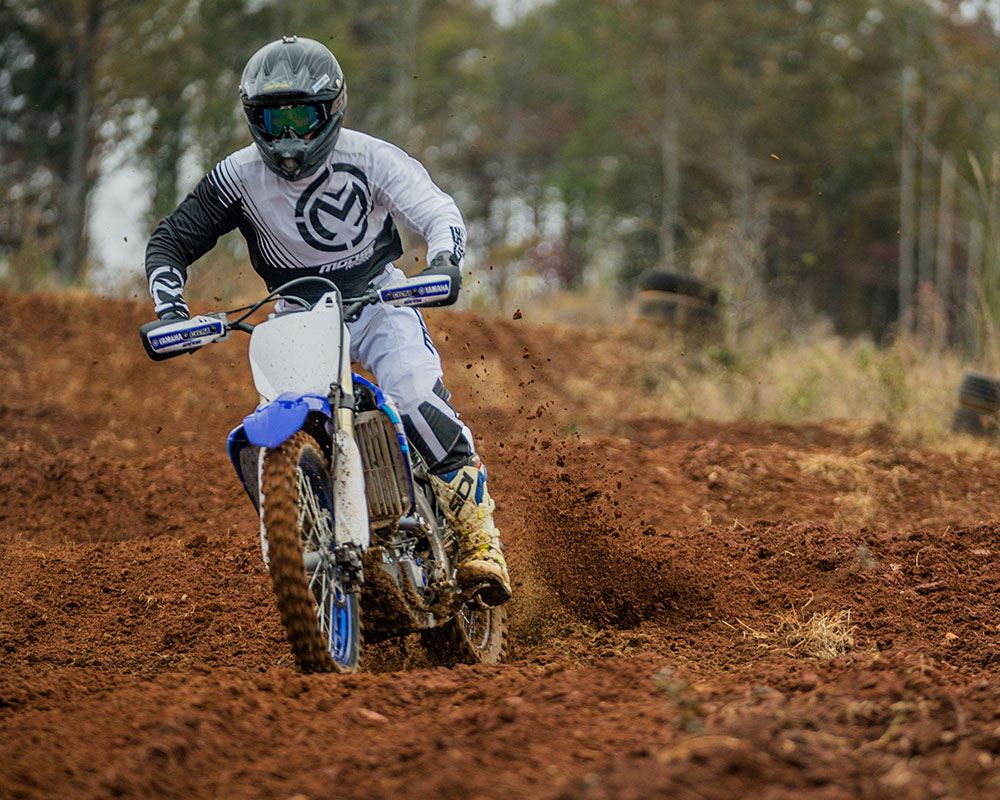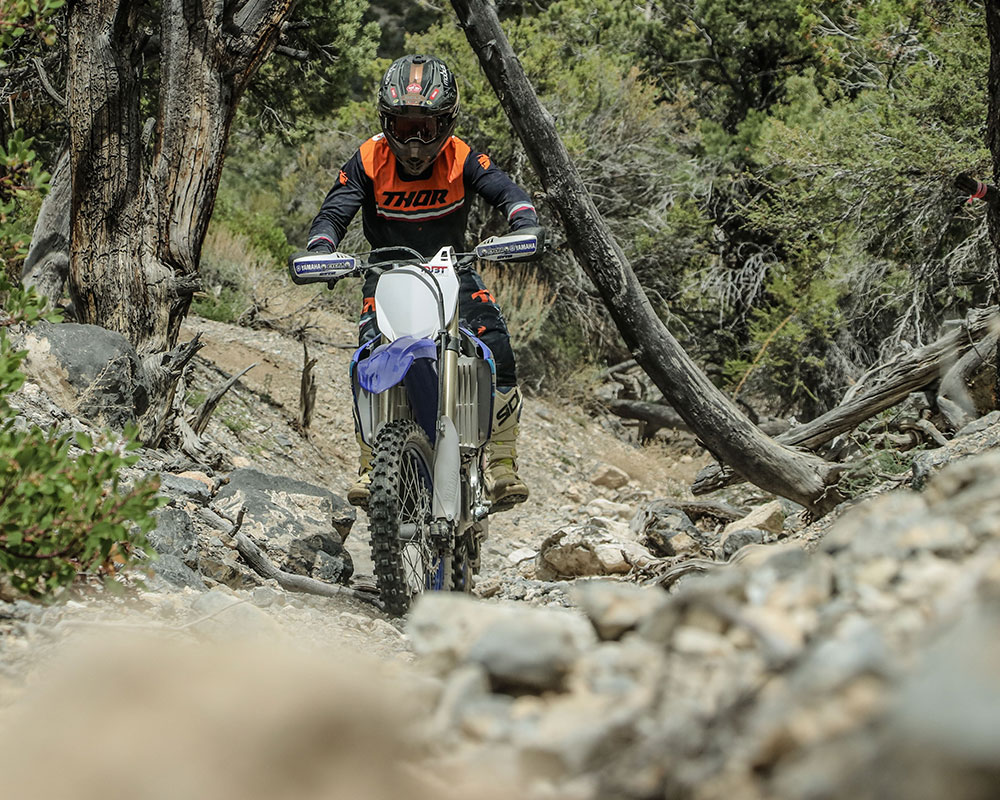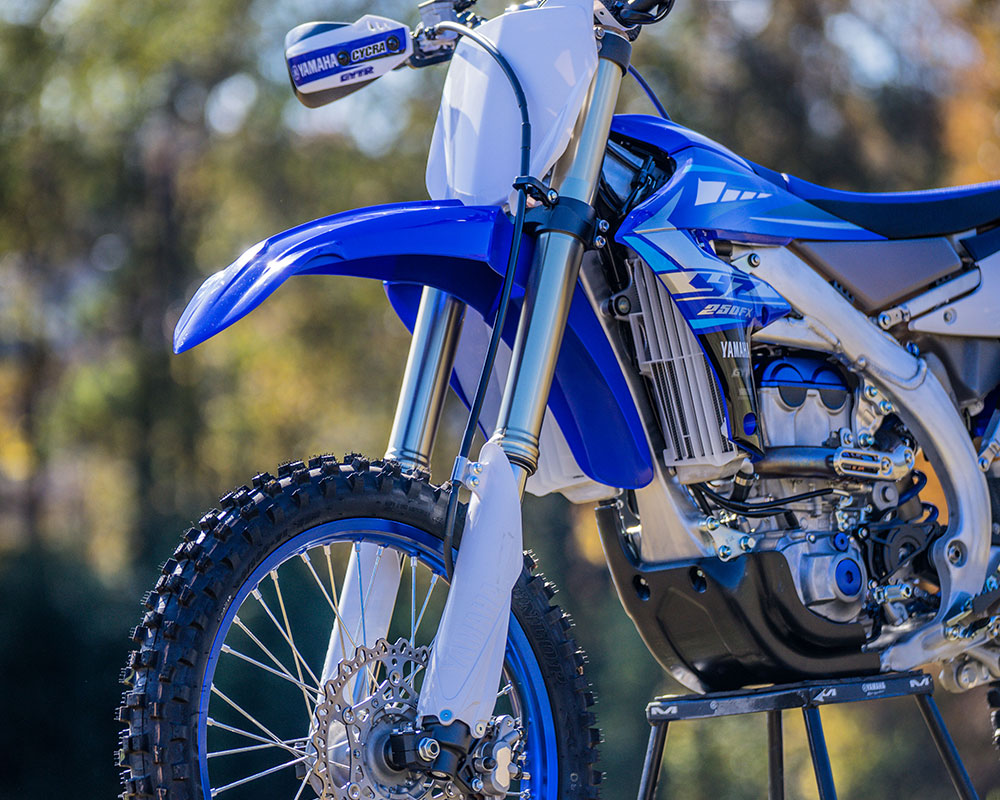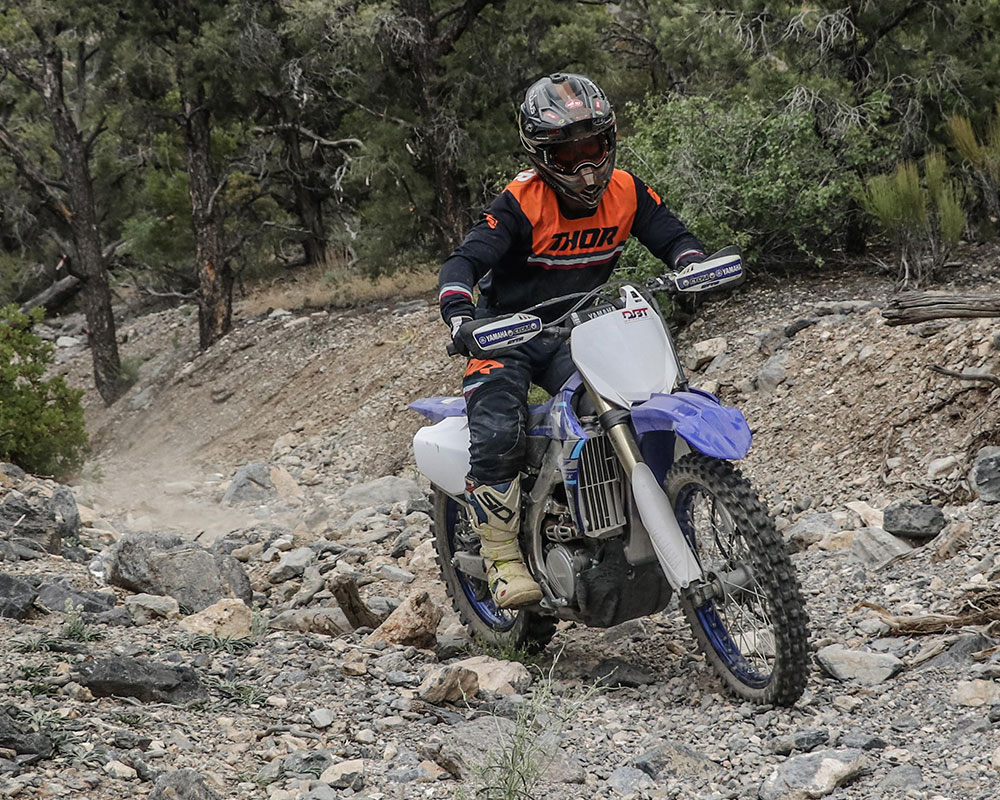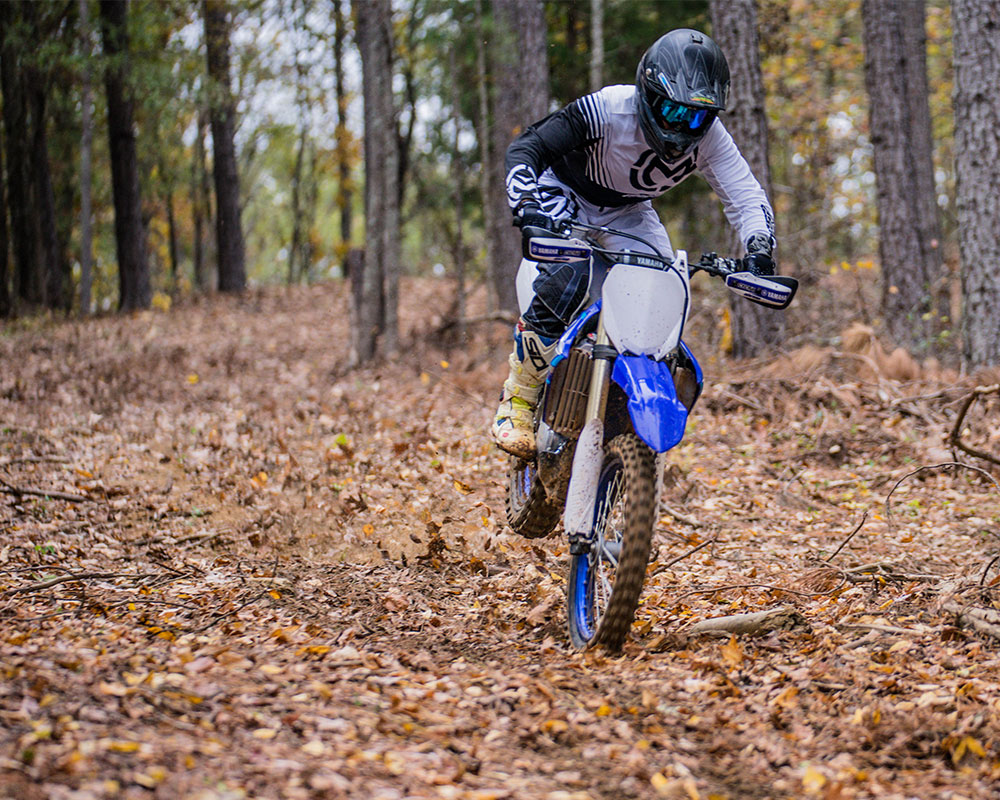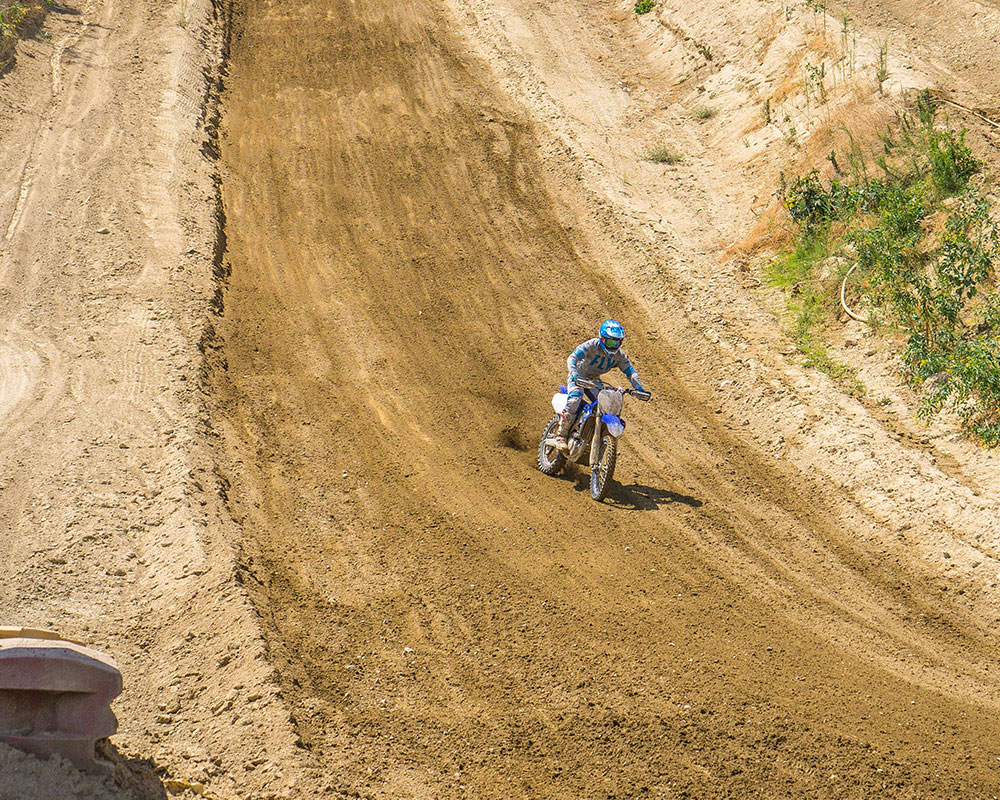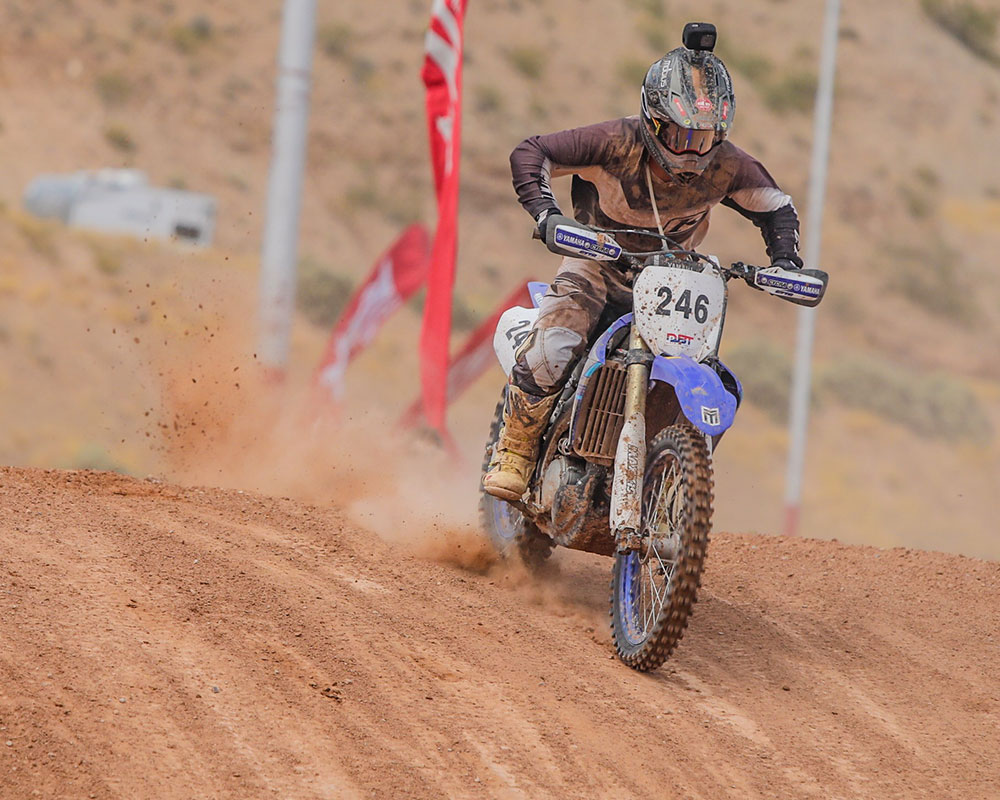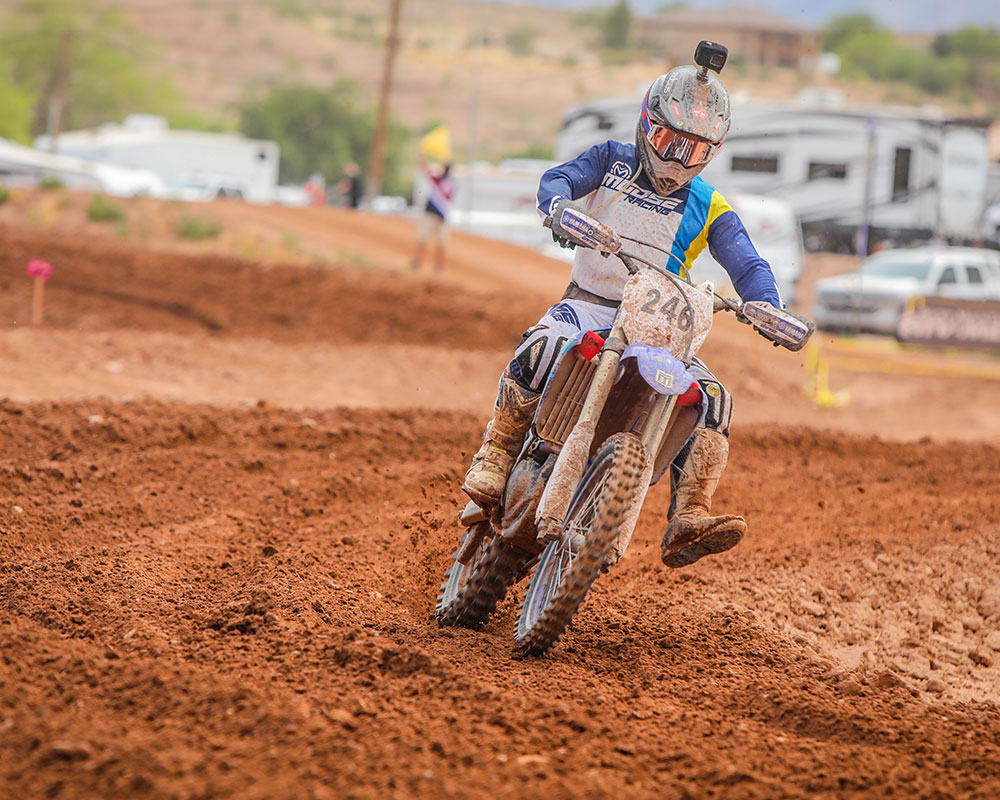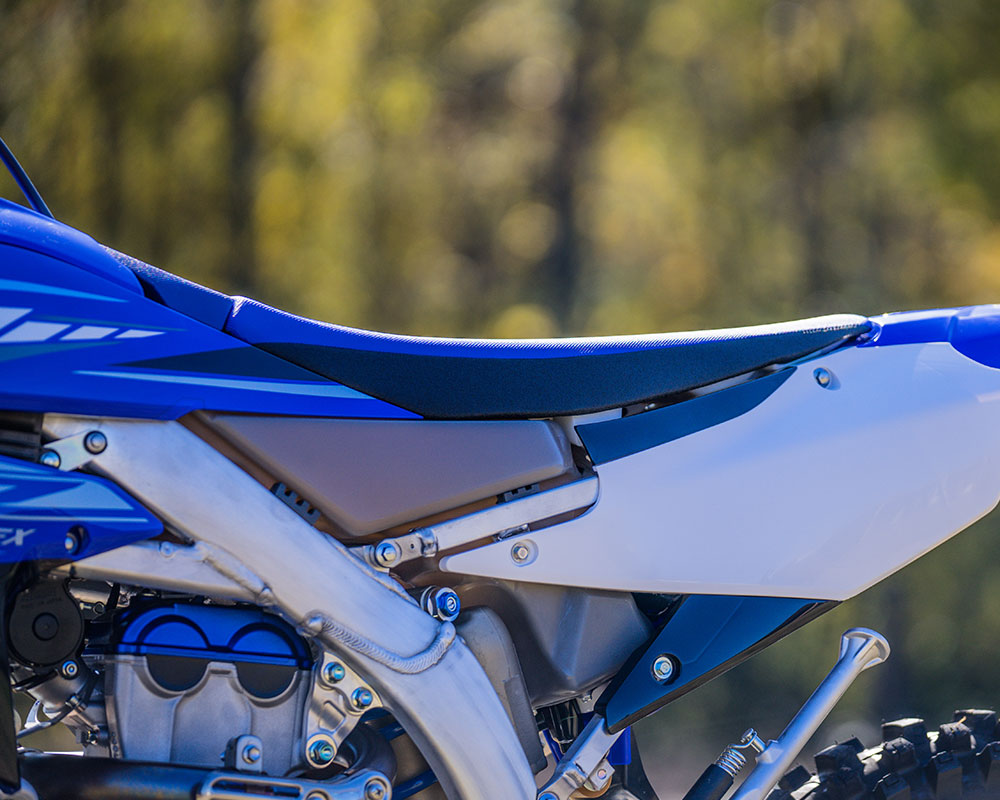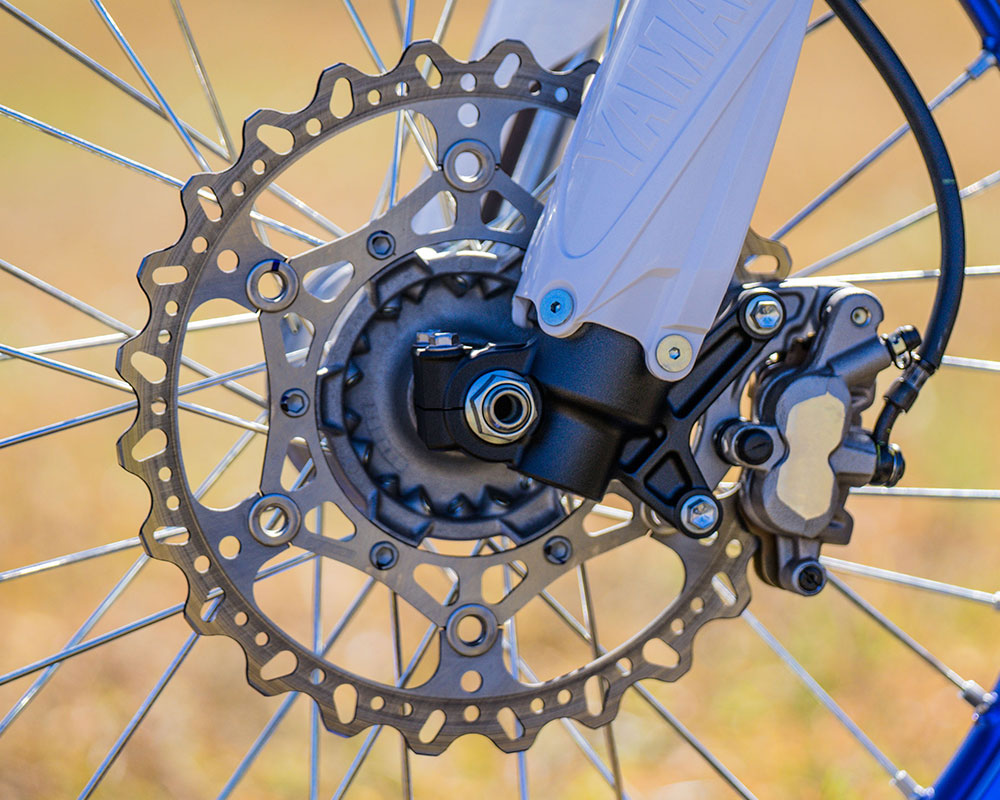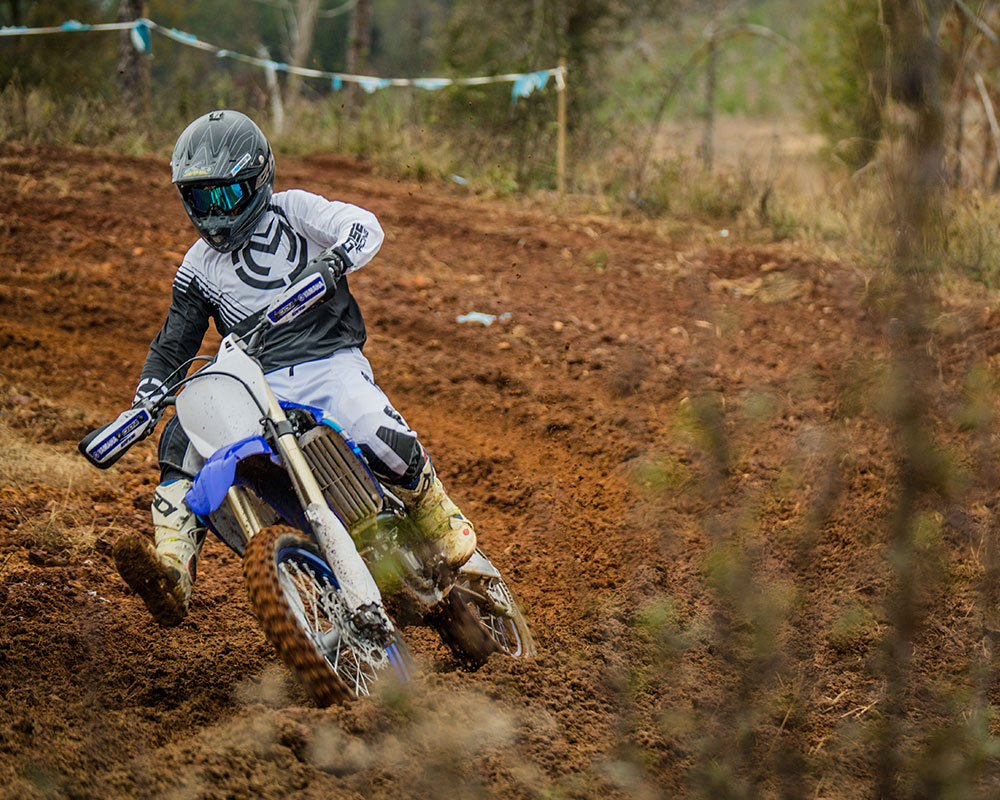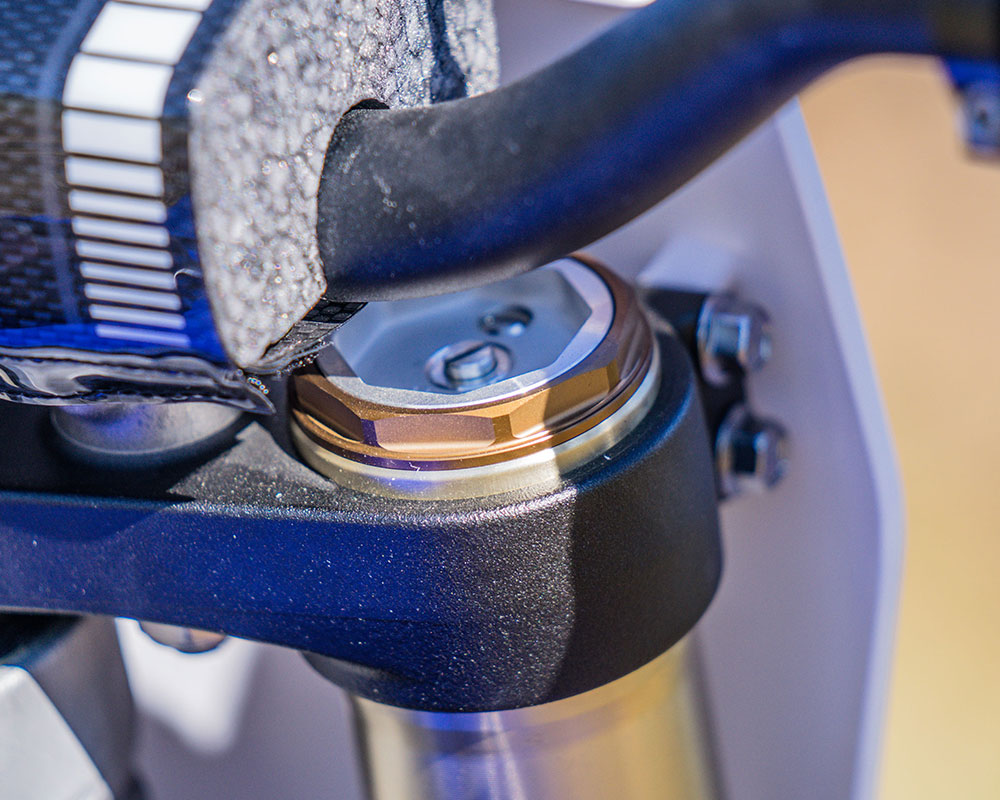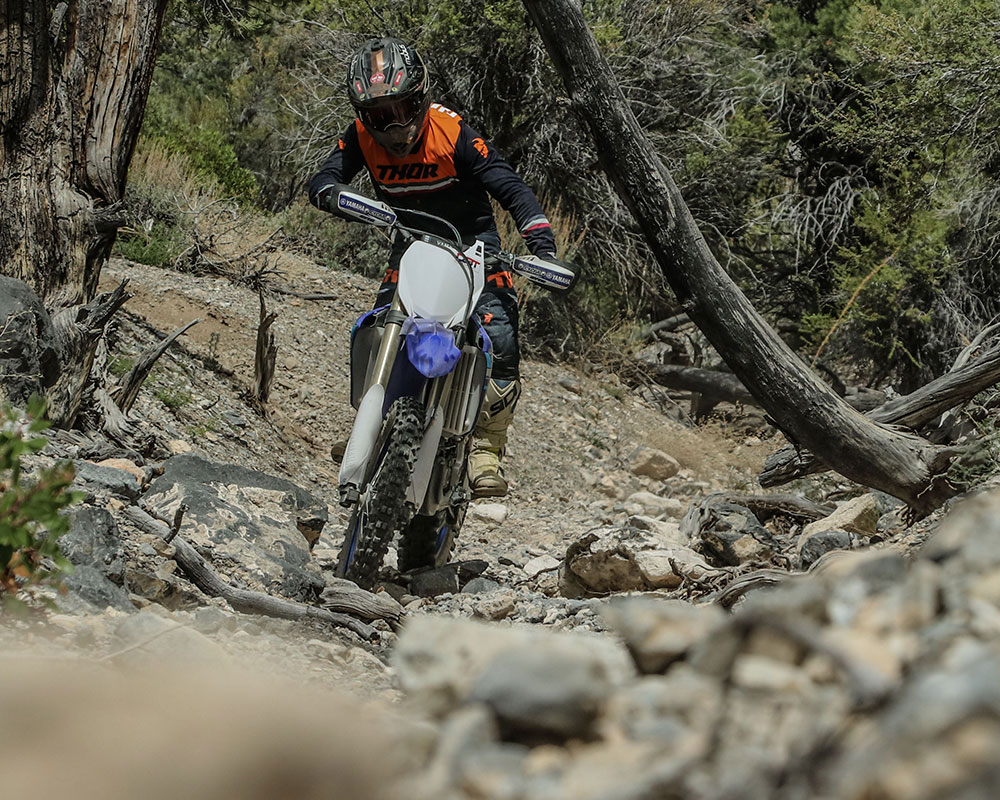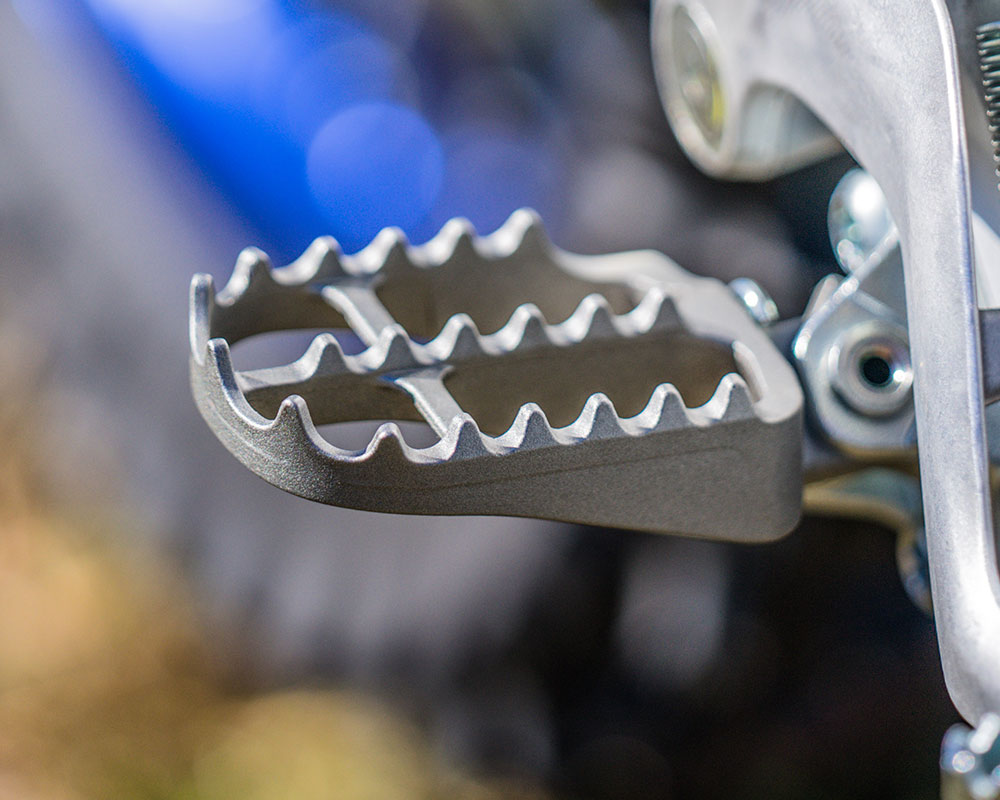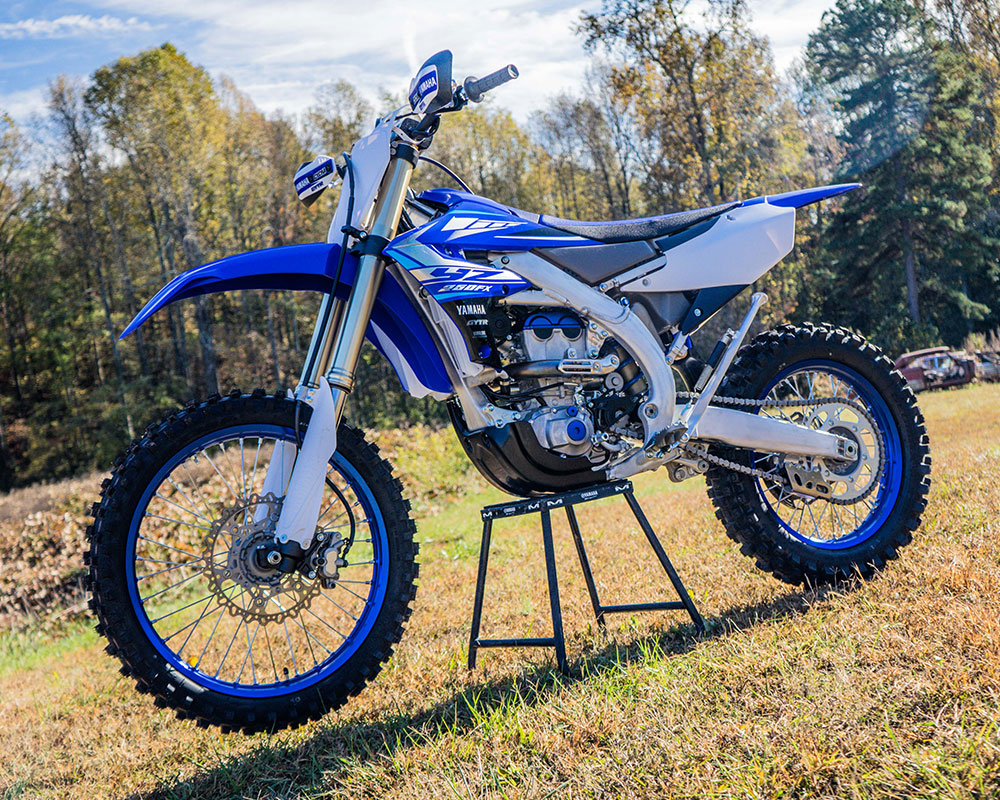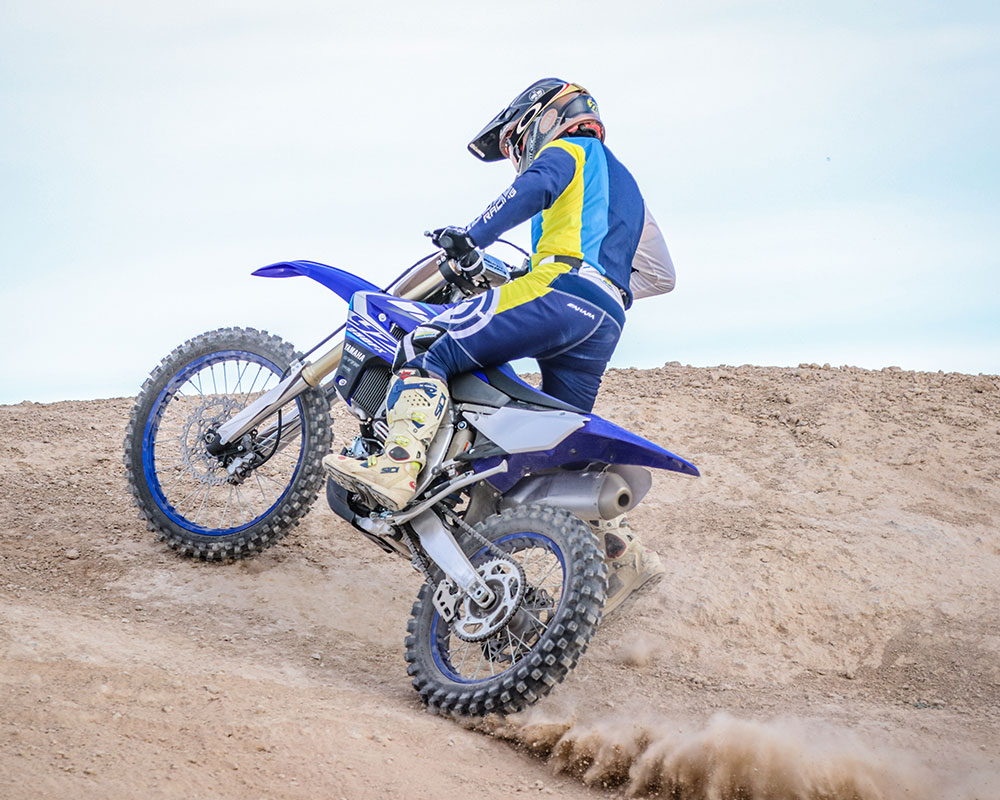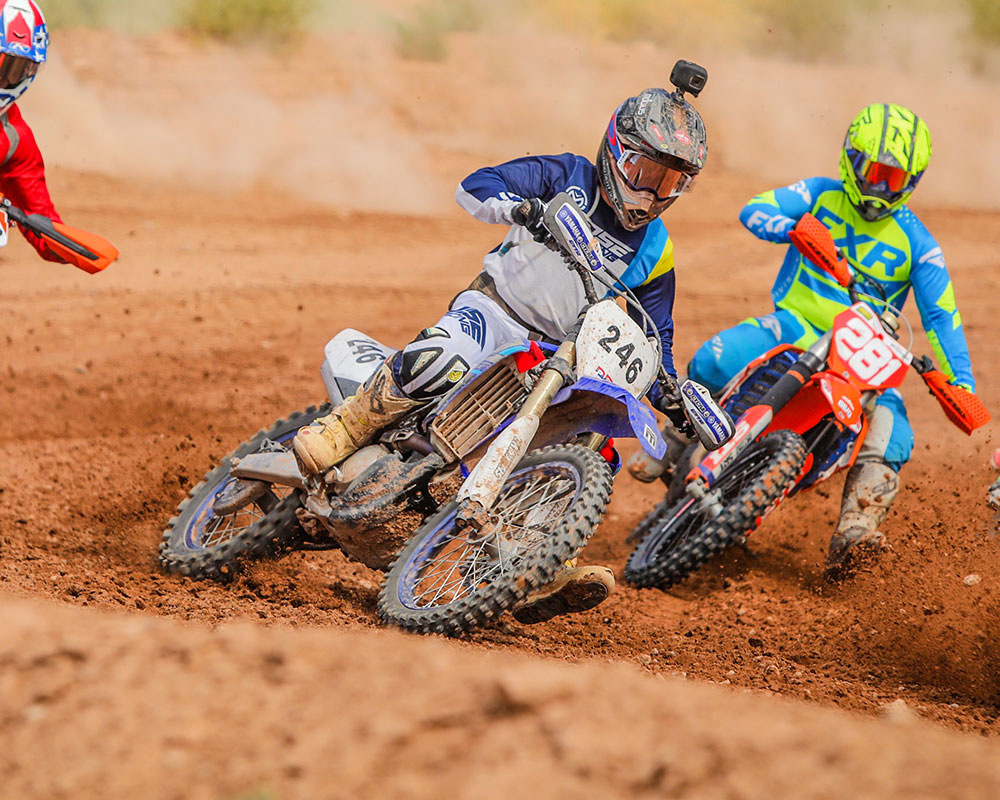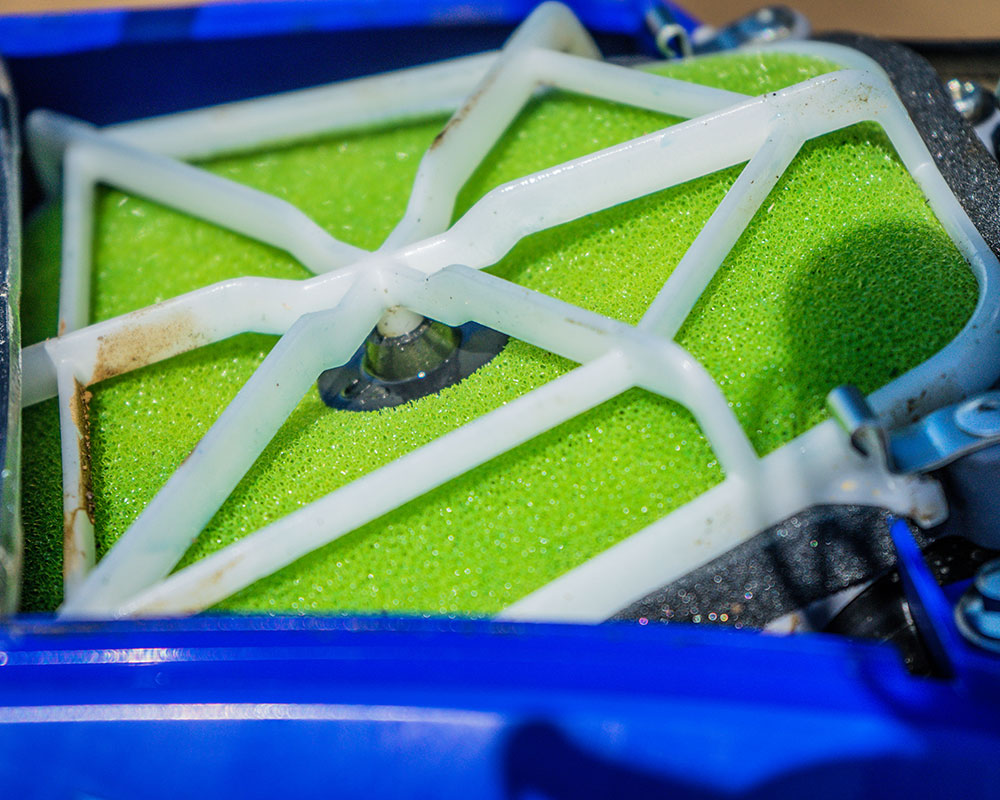2020/2021 Yamaha YZ250FX
The Best All-Arounder?
MSRP: $8,499
- Improved engine characteristic with broader power.
- More precise and nimble chassis feel.
- Slimmer chassis/bodywork.
- GYTR Power Tuner App compatible.
- Hard starting at times.
- Suspension isn't ideal for faster west coast off-road/MX riders.
- Ergonomics have some room for improvement.
Introduction
- Completely redesigned bike for 2020.
- Yamaha's 250F XC racer.
Yamaha has been a frontrunner in the 250F class ever since the rearward facing engine made its way into the small bore machine. It’s been praised for its powerful engine, excellent suspension, and a good chassis to complete a good all-around package. For 2020, the 250FX, Yamaha’s off-road racer, was completely redesigned with an updated engine and chassis. Essentially, it’s a YZ250F at heart, with just a few modifications to transform it into an off-road machine. And because the 2021 YZ250FX boasts just BNG, this test applies to the 2021 model as well.
Changes
- All new for 2020.
- Updated engine aimed at broadening power.
- New frame and bodywork to match current gen MXers.
For 2020, changes were abundant. Starting with power, the updated 250F is now compatible with the GYTR Power Tuner App. That’s right, you can whip out your smartphone in the middle of your trail ride and adjust the power to the terrain or your ability in a matter of seconds. We’ve praised this app since its inception, and we continue to love it each and every time we put it to use. The bike also has an on-the-fly mapping switch, allowing you to adjust between Map 1 and a mellower Map 2 with the push of a button.
Onto the engine’s hard parts, the compression has been bumped up from 13.5:1 to 13.8:1 with a new piston, a new cylinder head, and an updated valvetrain and camshaft timing. Additionally, the exhaust has been revised. All of the power related changes are aimed at improving the mid-top end performance without sacrificing the YZ’s notable bottom end. The clutch is a little beefier for 2020, with a goal of increasing durability and reducing fade under heavy use.
Chassis wise, the frame has been altered to increase vertical, horizontal, and torsional rigidity. The bLU cRU also updated the engine mounts to match the new frame design. Interestingly, the front FX engine mounts are the same material as the YZF, though the shape is different. The upper engine bracket is shared between the two 250F’s. Suspension has been updated in the form of valving, with tuned off-road specs designed for east coast, GNCC style riding/racing. The bodywork now matches the current YZF’s and is thinner and flatter.
What makes this bike different from the YZ250F motocrosser? As stated above, different engine mounts, a 2.2 gal fuel tank (0.6 more than the F), off-road specific suspension and mapping, and a 6-speed, wide-ratio transmission make up the biggest changes. Of course, the standard 18 in rear wheel, o-ring chain, kickstand, and skid plates also adorn the off-road racer.
Power
- Broader power with a significant increase in mid-top end performance.
- Loads of torque and bottom end making the bike easy to ride.
- GYTR Power Tuner App transforms the engine characteristic to nearly anything desired.
- Wide-ratio transmission works well in most off-road conditions.
The motor on all of Yamaha’s 250F’s have been praised for years now, and this bike is no different. The YZ has been known to have a torquey, bottom end heavy motor, though it lacked some from mid-top. That’s not the case anymore. The 250FX still retains that smooth yet powerful bottom end that we’ve come to love, but the power doesn’t stop there. As you transition into the mid-top, there’s no real significant drop off anymore. It responds well to aggressive riding and revving it out a little more, ultimately allowing us to run each gear much longer than before. Up top, it’s still not quite the hardest pulling bike in its class, but it’s very close. And with all of the power down low, it’ll get you up to speed quicker.
The beauty of this engine is how versatile it is. You can effectively ride it in any fashion you want and still go fast. It’s the best 250F for those who like to short shift and ride a gear high as the torque pulls you around, or you can be uber aggressive and bounce off the rev limiter at a fast pace. That’s not the case with most other 250F’s, which tend to be focused on going when the RPMs increase.
Using the GYTR Power Tuner App, we found the motor to be much more versatile than just an off-road racer. Frequent trips into the trees, deserts, and moto tracks saw us adjusting mapping accordingly for our desired power delivery of the day. On the moto tracks, our younger and more aggressive riders became fond of the “MX Power Feeling” map when traction was at a premium and the track was fast. It transformed the power into a snappy, more aggressive power that revved out a little quicker and increased connectivity to the rear wheel for an experienced rider. The other map we enjoyed was the “Torquey” map. This was a good all-around map that worked well no matter where we went, whether it was technical terrain or fast desert and motocross style riding. On the motocross track, we found it to be handy when the track was slick and overwatered, or when lines would get blown out and carving your way around a track became a little more difficult. This map smoothened out the power and helped find traction when there wasn’t much traction to be had. It also responded better to riding a gear high and smooth throttle control.
The wide-ratio transmission is good for what it is, though not always welcomed. For desert or even some tight woods riding, the spread worked well and we felt like we could always find the right gear. However, on motocross and GP style tracks, we would be searching for a middle gear from 2-3 and more so from 3-4. Realistically, we never found ourselves in first or sixth gear on a motocross track because of how low and high, respectively, they were. The clutch held up well to our abuse, though we aren’t particularly hard on clutches and haven’t had any issues with Yamaha clutches in the past. Adding a tooth or two to the rear sprocket can work wonders here if this is where you will be riding and racing.
For some Wide-ratio transmissions are a little tricky to master. They tend to have one gear for every condition, not two like a closer ratio in the middle speeds. That’s the case with the FX, especially on moto tracks. Saying that, the Yamaha motor is the most capable 250F of pulling off a wide-ratio transmission. But, we’ve found the spacing is just a tick off. The easiest way, aside from changing gearing to combat this was to play with the Power Tuner App. With the “MX Power Feeling” map, the quicker revving character helped mask the larger gaps and made the transitions more seamless if you keep the RPMs up.
Of note, we are getting used to the different and louder noise the Yamaha puts out from the forward mounted air intake. The shifting gets better with time on the bike, more-so after the 20-hour mark and some oil changes. Also, the bike’s electric starter seems to sometimes struggle on hot re-starts and we have not found a cause or a fix as of now. We ruled out the battery by swapping a few different options only to see no change.
Suspension
- Softer, GNCC style setup.
- Works well in conditions it is designed to work in.
- Soft for aggressive MX/high speed off-road riding
Off-road suspension is difficult to set up for the manufacturers. The setup needed for GNCC style racing is drastically different from that of a desert and that is different from a west coast GP racer. Yamaha aimed for a GNCC style setting with the 250FX and that calls for a softer, comforting setup. In our limited time back East for the press intro, the suspension worked really good. After two days of riding in the South Carolina woods through GNCC and National Enduro terrain, the bike soaked up all of the roots and rocks well. The softer suspension, combined with the heavier scale weight, gave the bike a very planted feel.
Once we got the bike out West in our usual terrain, we still found it to work really good most of the time. It’s an aggressive trail riding setup, being a little on the stiffer side, but still had enough compliance to avoid deflecting off rocks and small chop. Once we got into bigger sand whoops and on bigger motocross tracks, the softer nature became more apparent. The bike would bottom on large jump landings and through big breaking bumps, but it wasn’t a violent bottom. It’s a very controlled and smooth feeling that doesn’t jerk the bars out of your hands or break your wrists. We stiffened up both ends of the bike, and got it working better, but still not enough for our faster, aggressive testers.
For your average sized vet rider or novice who might stick mainly to the tamer vet tracks, the suspension works well. It soaks up the smaller chop and finds traction on the hard packed terrain. Overall, the YZFX suspension is very comforting and is more progressive than it has been in years past, but it needs some valving for those who are looking for a motocross inspired setup.
Chassis - Handling
- Balanced, stable chassis.
- Lighter and more nimble than the previous generation 250FX.
- Feels light on the track/trails.
Another area where the Yamaha shines is in the handling department. It does everything well and really nothing bad. The YZ is very stable at both low and high speeds. The heavier scale weight paired with softer suspension keeps the bike planted to the ground and soaking up nearly everything in its way. However, that scale weight isn’t necessarily felt out on the track or trails. In fact, some of our testers said the new bike’s most noticeable improvement might be the weight feel. The torquey motor gives the whole bike that peppy feel and hides any weight issues the bike may have on paper. With the new frame, the bike is more precise and nimble, making direction changes quicker and easier. Some of this is tuned out due to the wallowy feeling suspension, but once set up stiffer for our liking, the agility in the chassis will shine even more.
For being stable at speed, the bike still corners really well. Once you settle into a corner, the weight of the YZ keeps it planted in there as the strong motor pulls you through. Whether you wanted to hit a tight inside line, or rail around a fast berm or sweeping corners, the bike can do it all.
As we’ve said with all of the newer gen Yamaha four-strokes, the thinner bodywork is much better than before. It doesn’t feel nearly as wide as the earliest rearward facing engine YZ’s, and after riding for a few minutes, it feels as wide as any other bike. The stock footpegs are some of the best out there and make maneuvering the bike through the pegs simple and effective. Stock brakes work good for stock brakes--we feel they are average which these days is really good.
The stock Dunlop MX3S/MX3SF tires on this bike work really well and complete the package on this machine. Most off-road bikes come with Dunlop AT81 tires and we aren’t particularly a fan of them. The traction isn’t all that great and the sidewalls are on the stiff side, which detracts from the comfort of most bikes. It acts almost as if the compression clickers are turned in a few too many clicks. The MX3S tires offer ample traction under acceleration and braking and boast a good carcass. The only downside is the lifespan of the tires aren’t on the level of a dedicated off-road tire, but we still made the tires last for a couple hundred desert miles before having to replace them.
The rider cockpit is fairly roomy, and the new seating position with a flatter profile is welcomed. Smaller riders felt the bars are a little tall in stock trim. On our 2021 YZ450F, we tried a taller seat and every rider preferred it simply for how it changed the seating position. It tightened everything up a bit and made it feel like you are sitting on the bike, not in it. This also addressed the taller feeling handlebars. We’ll likely try that mod on this bike to see how it transitions into the off-road terrain.
Simple maintenance on the bike is a breeze. The air filter can be accessed with no tools, just a single dzus fastener, and there is no bolt for the filter cage. Likewise, oil changes are easy with a drain bolt, a screen, and a standard oil filter. You have to remove the skid plate to drain the oil, but the plate bolts directly to the frame making removal/installation easier than most.
Conclusion
- One of the better all-around dirt bikes.
- Can be used anywhere from MX to off-road with very minimal modifications.
Yamaha revamped the YZ250FX for 2020, and it has improved in the makeover. The engine is stronger than ever from top to bottom. It maintains its signature torque and bottom end power, but has made up for its previous lack of mid-top end power. It still isn’t quite the revver that some of its competition is, but the motor is the most versatile and the easiest to ride fast. Suspension works good in a broad range of terrain, and aside from higher level west coast off-roaders who tend to run motocross style suspension, it can be set up for a good majority of riders in stock trim. Handling wise, the bike is balanced and stable. The scale weight isn’t felt in a bad way out on the trails as it adds stability without sacrificing agility and nimbleness. This bike is one of the most versatile on the market, offering a power and chassis package that can be ridden in nearly any terrain with any rider onboard.
Yamaha durability has been stellar for us over the years, and we expect nothing less from this machine. We did have a fuel pump issue early on, but we are 99.9% sure that was a mechanic error as it happened after swapping out gas tanks to a larger unit for racing. Since getting it resolved, we haven’t had any issues. The only complaint we may have with this bike is it can be hard to start/slow to start at times. It typically only falters after stalling it, but it’s something that we aren’t too concerned about.
Recent Product Tests
Leave a Reply
